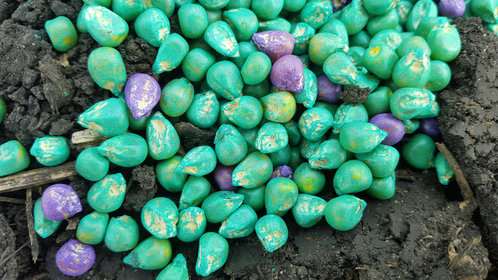These treatments control pests but there can still be damage with heavy insect pressure
By Patrick Lynch
Farms.com
Currently you can purchase corn seed treated with a neonic, Fortenza or Lumivia insecticide. All of these products CONTROL the main insects that attack corn seedlings. There are small but insignificant differences in the amount of insect control they offer.
CONTROL is the key word. None of these treatments will give you 100 per cent control of the insects noted on the labels.
If you have heavy insect pressure in part of a field, you can expect to still see insect damage. Also, it is important to note that these treatments are for the seed/seedling and are not full plant insecticides. These treatments may control more insects than are listed on their labels, but all of the possible coverages are not listed due to registration restrictions.

Treated corn seed
Photo: DarcyMaulsby/iStock/Getty Images Plus photo
If you need seed protection from insects in 2017, consider choosing the best hybrid first and then the insecticide seed treatment.
In many fields in 2016, we saw just marginal benefit to using an insecticide on corn seed. However, over a number of years, there has been benefits to insecticide-treated seed. Part of these benefits is an unexplained increase in yield by using a neonic insecticide. This fact makes some people leery of allowing farmers to use insecticide-treated seed.
We have seen something similar before. In the 1970s we used Furadan as a corn rootworm insecticide. We were getting a yield increase even when there were no rootworms. We concluded that Furadan was also controlling other unspecified insects as well as nematodes.